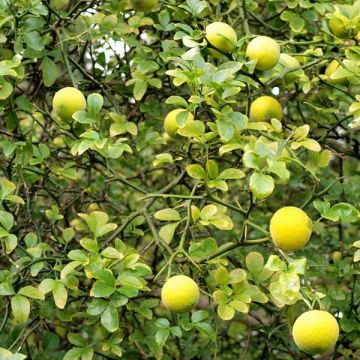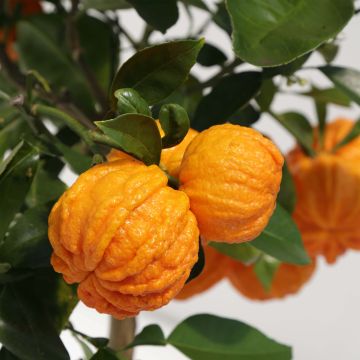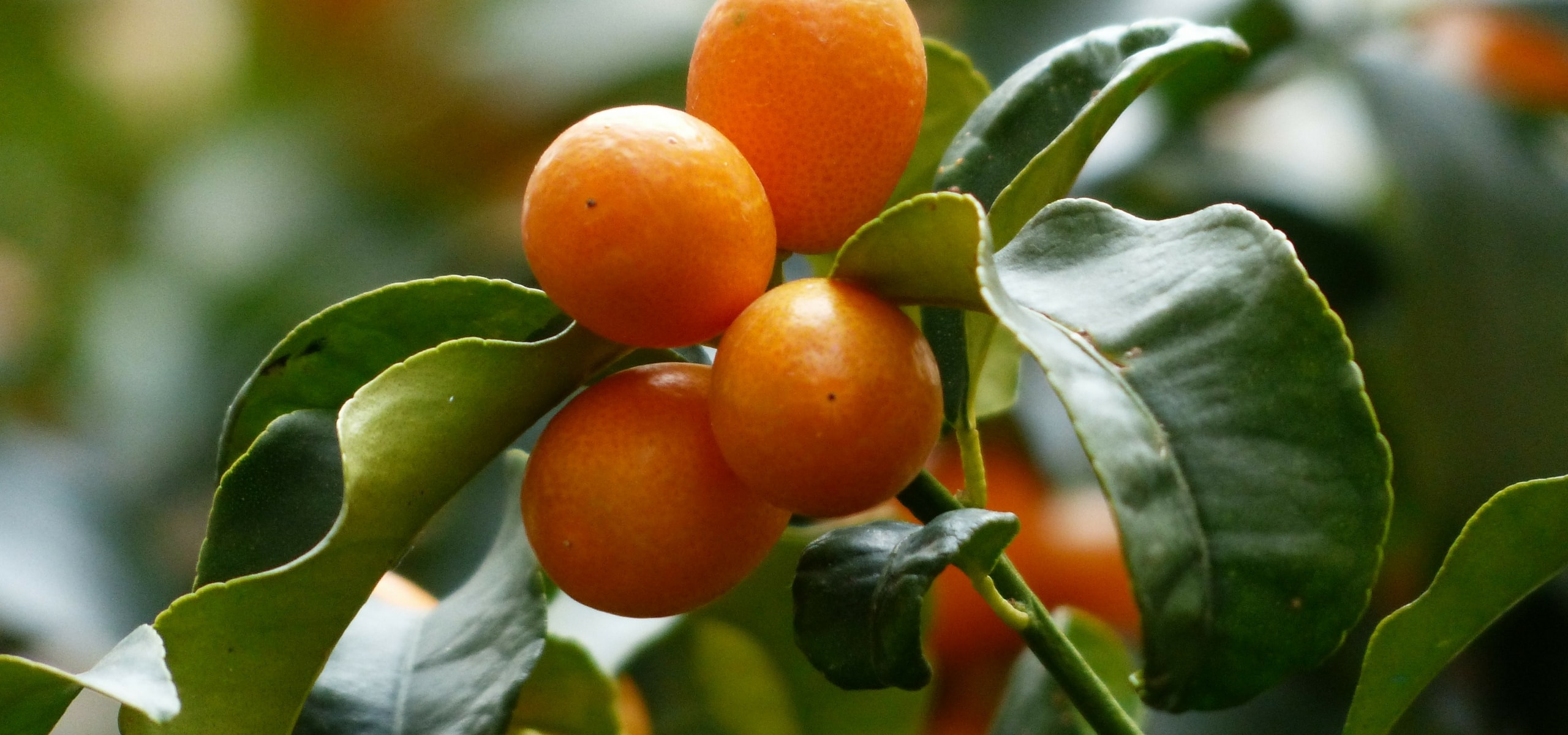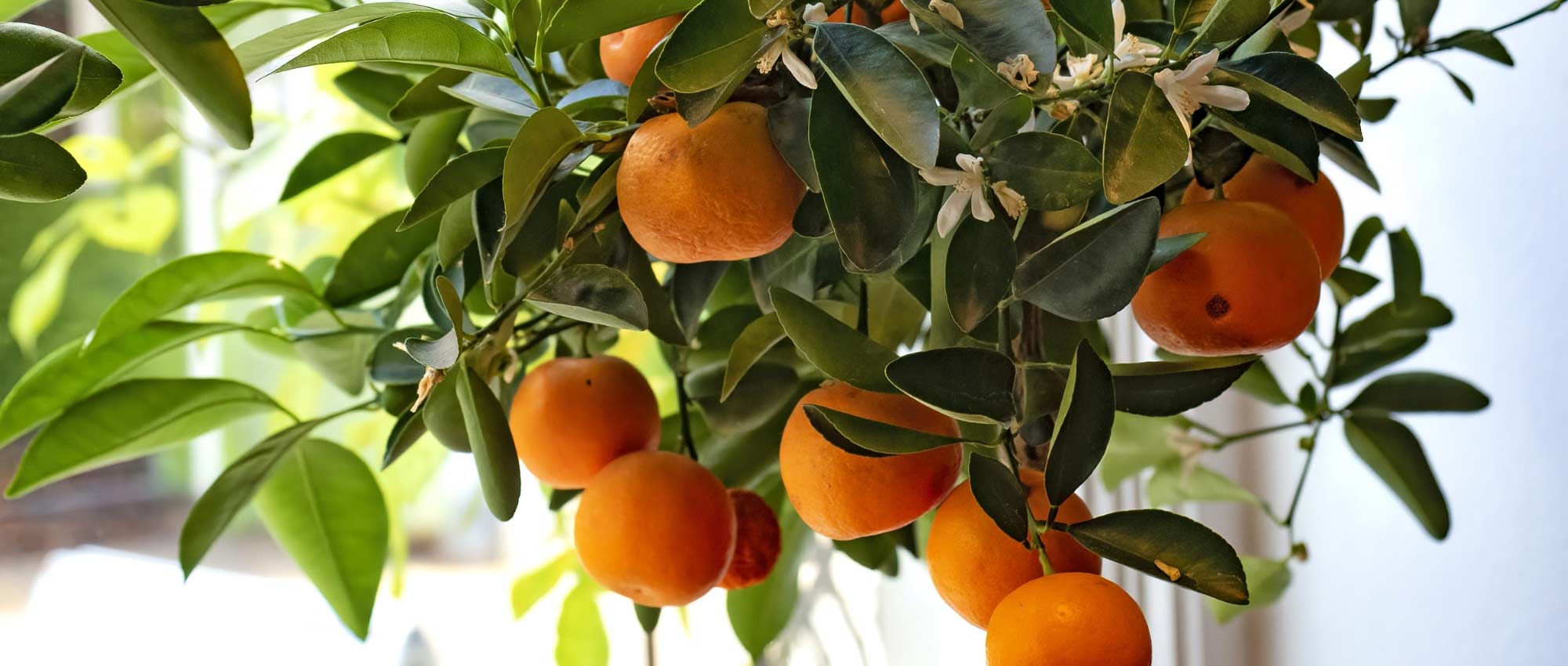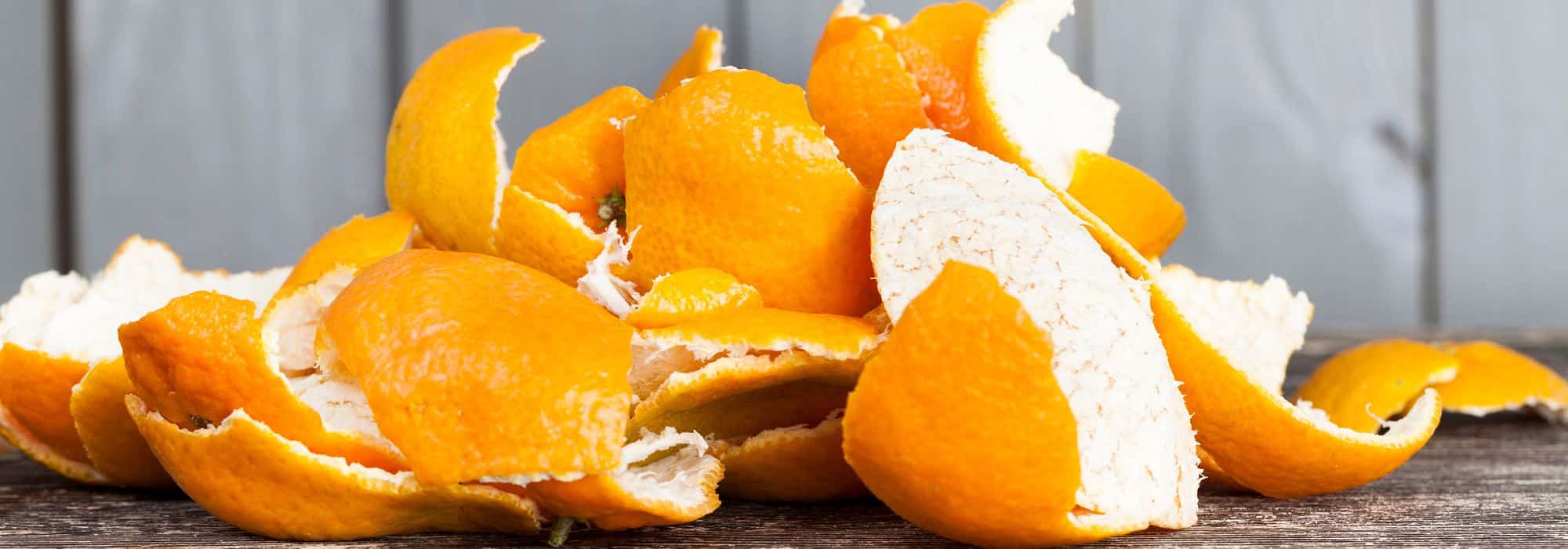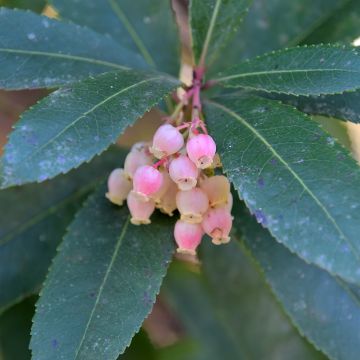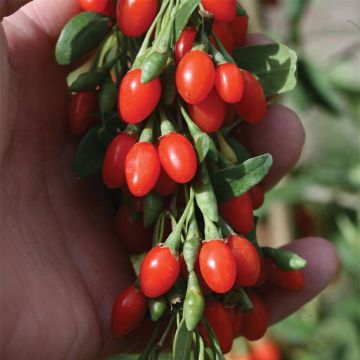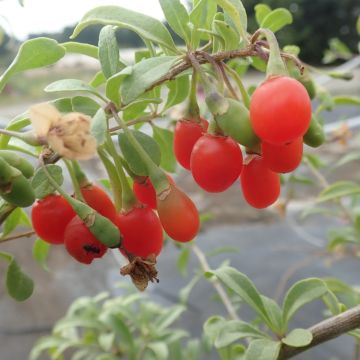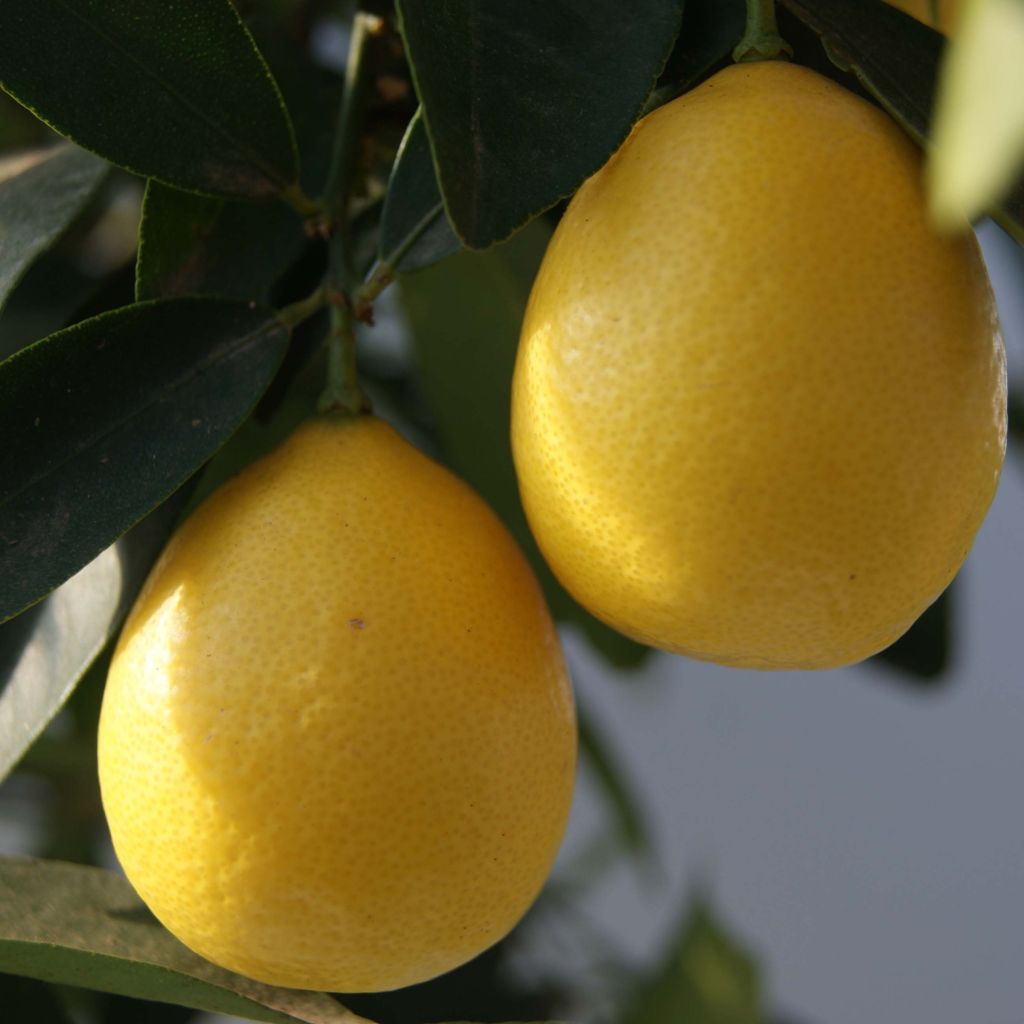

Limequat - Citrus x floridana
Citrus x floridana - Limequat Citrus Tree
Citrus floridana
Limequat Citrus Tree
Very good advice
Michele, 19/08/2021
Special offer!
Receive a €20 voucher for any order over €90 (excluding delivery costs, credit notes, and plastic-free options)!
1- Add your favorite plants to your cart.
2- Once you have reached €90, confirm your order (you can even choose the delivery date!).
3- As soon as your order is shipped, you will receive an email containing your voucher code, valid for 3 months (90 days).
Your voucher is unique and can only be used once, for any order with a minimum value of €20, excluding delivery costs.
Can be combined with other current offers, non-divisible and non-refundable.
Home or relay delivery (depending on size and destination)
Schedule delivery date,
and select date in basket
This plant carries a 6 months recovery warranty
More information
We guarantee the quality of our plants for a full growing cycle, and will replace at our expense any plant that fails to recover under normal climatic and planting conditions.

Description
The Limequat, in Latin Citrus floridana, is the result of cross-breeding between the Lime (Citrus aurantifolia) and the Kumquat (Citrus japonica). It is a very vigorous citrus tree, from the Rutaceae family, with a bushy, compact and dense habit. It produces very unique oval-round fruits with smooth green-yellow skin and juicy, acidic and bitter flesh, similar to that of a lime but more flavourful. Very productive even when young, it is also appreciated for its numerous deliciously fragrant white flowers and its undeniable ornamental interest.
The Limequat is a hybrid selected by the American Walter Tennyson Swingle in 1909. This small tree reaches a height of 3 m (9 ft 10 in) and spreads over about 2 m. Its branches are short. Hardy down to -6°C, it can be planted in the ground only in warm climates. Elsewhere, it will be grown in a pot and stored indoors at the first sign of cold weather. Cultivated mainly for its fruits, the limequat blooms abundantly in March-April, and then again, more sporadically, until autumn. It produces small white flowers, slightly tinged with yellow at the centre and with a delicate and delicious neroli perfume, characteristic of Citrus. They give way to oval to rounded fruits, resembling yellow limes, measuring 5 to 8 cm (2 to 3.1 in) in diameter. Their very thin, smooth skin is initially dark green and then turns green-yellow. The fruit pulp, white-greenish and translucent, is both very juicy and very acidic and contains a few seeds. The fruits are harvested when the skin turns yellow, but they can also be harvested while still green if a higher acidity and essential oil content is desired. The evergreen and aromatic leaves of this citrus are ovate, leathery, small and intense green.
The Limequat is used in a similar way to lime. In cooking, it can be used in savoury or sweet dishes. Its juice is used in refreshing drinks or cocktails, adding a touch of acidity and a unique aroma. The zest is sometimes used to flavour pastries. The Limequat is also very rich in ascorbic acid (Vitamin C), as well as vitamins A and B. Easy to store, this citrus was once carried on sailing ships, providing a good source of vitamins to combat scurvy.
Like all Citrus, the Limequat contains essential oil pockets in its leaves, flowers, and fruits, often visible to the naked eye. These can be extracted by distillation (flowers and leaves) or by pressing (zest) to obtain essential oil with balancing properties that are slightly sedative and help to recentre vital energies. The essential oil is stimulating and known to facilitate blood circulation. The fragrance of the essential oil is described as fresh, lemony and acidic, with slightly sweet and bitter notes.
Moderately hardy, Citrus floridana starts to suffer from cold temperatures as low as 0°C (32 °F). It is a self-fertile bush, which means that a single plant is sufficient for complete pollination and fruit set.
Citrus x floridana - Limequat Citrus Tree in pictures




Plant habit
Fruit
Flowering
Foliage
Botanical data
Citrus
floridana
Rutaceae
Limequat Citrus Tree
Cultivar or hybrid
Other Citrus trees
View all →Planting and care
Planting in open ground: The Limequat requires neutral, slightly acidic and non-chalky soils. It is reasonable to plant it in open ground only if you reside in a very favourable area spared from frost, as the hardiness of this citrus tree does not exceed -3°C (26.6 °F) and it needs a lot of warmth to flower and bear fruit. The best period to plant is in early spring, March and April. Be careful not to bury the collar. Citrus trees are naturally greedy and require water to bear fruit well: consider adding well-rotted compost or "special citrus" fertilizer. Choose a sunny but not scorching spot for your bush, sheltered from the wind to prevent it from drying out the foliage and dropping the young fruits. Place it in a location protected from sea spray.
Planting in a pot: In all other regions, the Limequat will be planted in a pot that you can keep in a slightly heated greenhouse or conservatory, frost-free permanently, in an atmosphere that is not too dry. It will appreciate being outside in summer. Planting in a pot or repotting should take place at the end of summer. Choose a pot slightly larger than the root system, as citrus trees do not appreciate feeling cramped. Moisten the root ball well. To improve the drainage capacity of the mixture, line the bottom of the pot with clay pebbles. Loosen the root ball and mix two-thirds garden soil with one-third special "citrus" potting soil. Water thoroughly. Preferably choose pots made of clay or breathable material.
Citrus trees need a lot of water to thrive. Your Citrus tree should be watered every day with water that is not chalky, and the soil should remain moist at all times. Similarly, make sure to regularly provide it with the fertilizer it needs: every 6 months for slow-release granular fertilizer or every 3rd watering for liquid fertilizer.
Planting period
Intended location
Care
Planting & care advice
-
, onOrder confirmed
Reply from on Promesse de fleurs
Similar products
Haven't found what you were looking for?
Hardiness is the lowest winter temperature a plant can endure without suffering serious damage or even dying. However, hardiness is affected by location (a sheltered area, such as a patio), protection (winter cover) and soil type (hardiness is improved by well-drained soil).

Photo Sharing Terms & Conditions
In order to encourage gardeners to interact and share their experiences, Promesse de fleurs offers various media enabling content to be uploaded onto its Site - in particular via the ‘Photo sharing’ module.
The User agrees to refrain from:
- Posting any content that is illegal, prejudicial, insulting, racist, inciteful to hatred, revisionist, contrary to public decency, that infringes on privacy or on the privacy rights of third parties, in particular the publicity rights of persons and goods, intellectual property rights, or the right to privacy.
- Submitting content on behalf of a third party;
- Impersonate the identity of a third party and/or publish any personal information about a third party;
In general, the User undertakes to refrain from any unethical behaviour.
All Content (in particular text, comments, files, images, photos, videos, creative works, etc.), which may be subject to property or intellectual property rights, image or other private rights, shall remain the property of the User, subject to the limited rights granted by the terms of the licence granted by Promesse de fleurs as stated below. Users are at liberty to publish or not to publish such Content on the Site, notably via the ‘Photo Sharing’ facility, and accept that this Content shall be made public and freely accessible, notably on the Internet.
Users further acknowledge, undertake to have ,and guarantee that they hold all necessary rights and permissions to publish such material on the Site, in particular with regard to the legislation in force pertaining to any privacy, property, intellectual property, image, or contractual rights, or rights of any other nature. By publishing such Content on the Site, Users acknowledge accepting full liability as publishers of the Content within the meaning of the law, and grant Promesse de fleurs, free of charge, an inclusive, worldwide licence for the said Content for the entire duration of its publication, including all reproduction, representation, up/downloading, displaying, performing, transmission, and storage rights.
Users also grant permission for their name to be linked to the Content and accept that this link may not always be made available.
By engaging in posting material, Users consent to their Content becoming automatically accessible on the Internet, in particular on other sites and/or blogs and/or web pages of the Promesse de fleurs site, including in particular social pages and the Promesse de fleurs catalogue.
Users may secure the removal of entrusted content free of charge by issuing a simple request via our contact form.
The flowering period indicated on our website applies to countries and regions located in USDA zone 8 (France, the United Kingdom, Ireland, the Netherlands, etc.)
It will vary according to where you live:
- In zones 9 to 10 (Italy, Spain, Greece, etc.), flowering will occur about 2 to 4 weeks earlier.
- In zones 6 to 7 (Germany, Poland, Slovenia, and lower mountainous regions), flowering will be delayed by 2 to 3 weeks.
- In zone 5 (Central Europe, Scandinavia), blooming will be delayed by 3 to 5 weeks.
In temperate climates, pruning of spring-flowering shrubs (forsythia, spireas, etc.) should be done just after flowering.
Pruning of summer-flowering shrubs (Indian Lilac, Perovskia, etc.) can be done in winter or spring.
In cold regions as well as with frost-sensitive plants, avoid pruning too early when severe frosts may still occur.
The planting period indicated on our website applies to countries and regions located in USDA zone 8 (France, United Kingdom, Ireland, Netherlands).
It will vary according to where you live:
- In Mediterranean zones (Marseille, Madrid, Milan, etc.), autumn and winter are the best planting periods.
- In continental zones (Strasbourg, Munich, Vienna, etc.), delay planting by 2 to 3 weeks in spring and bring it forward by 2 to 4 weeks in autumn.
- In mountainous regions (the Alps, Pyrenees, Carpathians, etc.), it is best to plant in late spring (May-June) or late summer (August-September).
The harvesting period indicated on our website applies to countries and regions in USDA zone 8 (France, England, Ireland, the Netherlands).
In colder areas (Scandinavia, Poland, Austria...) fruit and vegetable harvests are likely to be delayed by 3-4 weeks.
In warmer areas (Italy, Spain, Greece, etc.), harvesting will probably take place earlier, depending on weather conditions.
The sowing periods indicated on our website apply to countries and regions within USDA Zone 8 (France, UK, Ireland, Netherlands).
In colder areas (Scandinavia, Poland, Austria...), delay any outdoor sowing by 3-4 weeks, or sow under glass.
In warmer climes (Italy, Spain, Greece, etc.), bring outdoor sowing forward by a few weeks.

































